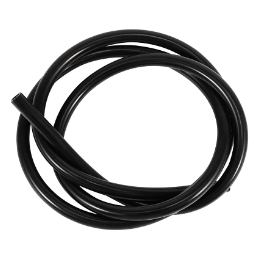Hose pipes are critical components in numerous industries, such as agriculture, manufacturing, and construction, where their performance hinges on properties like flexibility, tensile strength, and durability. Balancing these attributes is essential to meet diverse application demands while ensuring long-term reliability.
The base material plays a pivotal role in determining the flexibility and strength of hose pipes. Advanced polymers like thermoplastic elastomers (TPE), polyurethane (PU), and synthetic rubbers such as EPDM or NBR provide an optimal combination of flexibility, tensile strength, and resistance to environmental factors.
Thermoplastic Elastomers (TPE): Combines the elasticity of rubber with the toughness of plastics, ensuring high flexibility and mechanical strength.
Polyurethane (PU): Known for excellent tensile strength, PU maintains flexibility over a broad temperature range and resists wear and tear.
EPDM (Ethylene Propylene Diene Monomer): Commonly used for its exceptional aging resistance, particularly against ozone, UV radiation, and extreme weather.
Composite hoses made of layers of different materials can deliver tailored properties:
Inner Layer: Ensures chemical compatibility and abrasion resistance.
Reinforcement Layer: Braided or spiraled textile fibers, metal wires, or high-tensile synthetic yarns enhance strength without compromising flexibility.
Outer Layer: Protects against environmental factors like UV rays, abrasion, and moisture.
The method of reinforcement greatly impacts the balance between flexibility and tensile strength:
Spiral Reinforcement: Provides excellent flexibility while maintaining pressure resistance and tensile strength.
Braided Reinforcement: Enhances flexibility and strength in multiple directions, ideal for dynamic applications.
Layered Structure: Alternating soft and reinforced layers ensure flexibility at lower layers while maintaining overall durability.

Optimizing wall thickness can help strike a balance between flexibility and strength:
Thinner walls improve flexibility but may reduce tensile strength.
Gradual tapering or segmental designs in thickness can distribute stress evenly, enhancing overall performance.
Ultraviolet (UV) exposure is a primary factor in hose aging. Incorporating UV stabilizers, such as carbon black or specialty additives, into the hose material can significantly delay degradation.
Use of materials like EPDM, which is inherently ozone-resistant, can enhance aging performance.
Antioxidants blended into the material reduce oxidation-induced brittleness and cracking.
High humidity and temperatures accelerate aging. Heat-stabilizing agents and moisture-barrier coatings on the hose’s outer layer can mitigate these effects, prolonging lifespan.
Using precision-controlled extrusion methods ensures consistent wall thickness, material distribution, and layer adhesion, improving flexibility and strength simultaneously.
Cross-Linking Technologies
Chemical Cross-Linking: Enhances molecular bonding in rubber and thermoplastic materials, increasing tensile strength while maintaining elasticity.
Radiation Cross-Linking: Utilizes electron beams or gamma rays to create stronger molecular structures, boosting both mechanical properties and aging resistance.
Hoses are subjected to bending tests under various conditions to ensure they retain flexibility without cracking or delaminating. Dynamic tests simulate real-world conditions to verify performance.
Tensile Strength Testing
ISO and ASTM standards dictate tensile testing procedures to ensure hoses withstand designated loads without permanent deformation or failure.
Accelerated Aging Tests
Hoses are exposed to extreme conditions, including high UV, ozone, temperature, and humidity, to evaluate long-term durability and ensure they maintain functionality over their service life.
Incorporating nanomaterials like graphene or carbon nanotubes enhances tensile strength and flexibility while improving resistance to environmental degradation.
Self-Healing Materials
Emerging materials with self-healing properties can repair minor cracks and abrasions autonomously, extending the lifespan and performance of the hose.
Smart Hose Technologies
Sensors embedded in the hose can monitor environmental exposure, stress levels, and wear, alerting users to potential failures before they occur.
Ensuring the flexibility of hose pipe series while improving tensile strength and anti-aging performance requires a holistic approach that combines advanced materials, structural optimization, and cutting-edge manufacturing techniques. By integrating UV stabilizers, adopting layered composite designs, and employing rigorous testing, manufacturers can deliver high-performance hoses that meet the demanding needs of various industries while ensuring long-term reliability and efficiency.

 English
English Español
Español русский
русский












